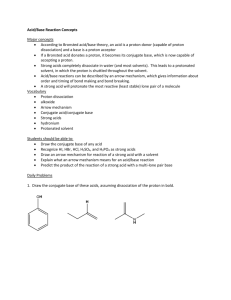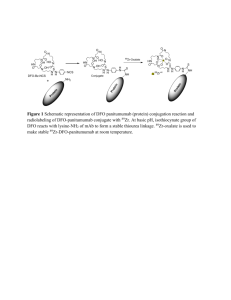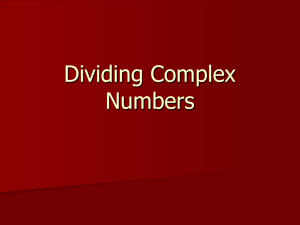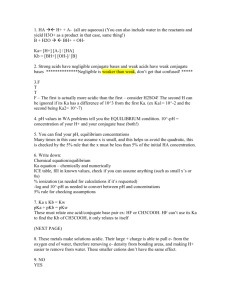Conjugate Acid
advertisement
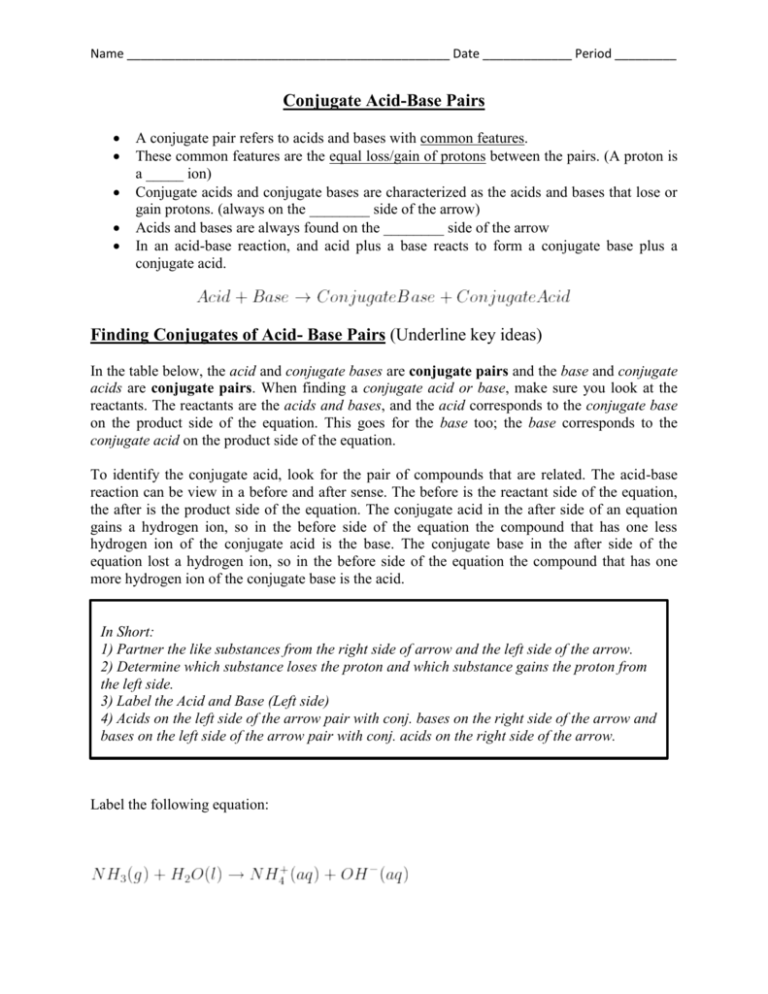
Name _______________________________________________ Date _____________ Period _________ Conjugate Acid-Base Pairs A conjugate pair refers to acids and bases with common features. These common features are the equal loss/gain of protons between the pairs. (A proton is a _____ ion) Conjugate acids and conjugate bases are characterized as the acids and bases that lose or gain protons. (always on the ________ side of the arrow) Acids and bases are always found on the ________ side of the arrow In an acid-base reaction, and acid plus a base reacts to form a conjugate base plus a conjugate acid. Finding Conjugates of Acid- Base Pairs (Underline key ideas) In the table below, the acid and conjugate bases are conjugate pairs and the base and conjugate acids are conjugate pairs. When finding a conjugate acid or base, make sure you look at the reactants. The reactants are the acids and bases, and the acid corresponds to the conjugate base on the product side of the equation. This goes for the base too; the base corresponds to the conjugate acid on the product side of the equation. To identify the conjugate acid, look for the pair of compounds that are related. The acid-base reaction can be view in a before and after sense. The before is the reactant side of the equation, the after is the product side of the equation. The conjugate acid in the after side of an equation gains a hydrogen ion, so in the before side of the equation the compound that has one less hydrogen ion of the conjugate acid is the base. The conjugate base in the after side of the equation lost a hydrogen ion, so in the before side of the equation the compound that has one more hydrogen ion of the conjugate base is the acid. In Short: 1) Partner the like substances from the right side of arrow and the left side of the arrow. 2) Determine which substance loses the proton and which substance gains the proton from the left side. 3) Label the Acid and Base (Left side) 4) Acids on the left side of the arrow pair with conj. bases on the right side of the arrow and bases on the left side of the arrow pair with conj. acids on the right side of the arrow. Label the following equation: How to identify Conjugate Pairs (Label the Equation) 1. HNO3 is an acid because it donates a proton to water and its conjugate base is NO3- .An easy way to identify the conjugate base is that it differs from the acid by one proton. 2. H2O is a base because it accepts a proton from HNO3 and its conjugate acid is H3O+. Again to identify the conjugate acid (or any conjugate pair) is that it differs from the base by one proton. The following table is an example of conjugate acid and base pairs in a given equation: Equation Acid Base Conjugate Base Conjugate Acid HClO2 H2O H2O OCl- HCl H2PO4- ClO2- H3O+ OH- HOCl Cl- H3PO4 Practice Problems Equation HF + H2O F- + H3O+ HSO4- + NH3 C2H3O2- + HCl HNO2 + H2O HCN + H2O SO42- + NH4+ HC2H3O2 + Cl- H3O+ + NO2- H3O+ + CN- Acid Base Conjugate Base Conjugate Acid
